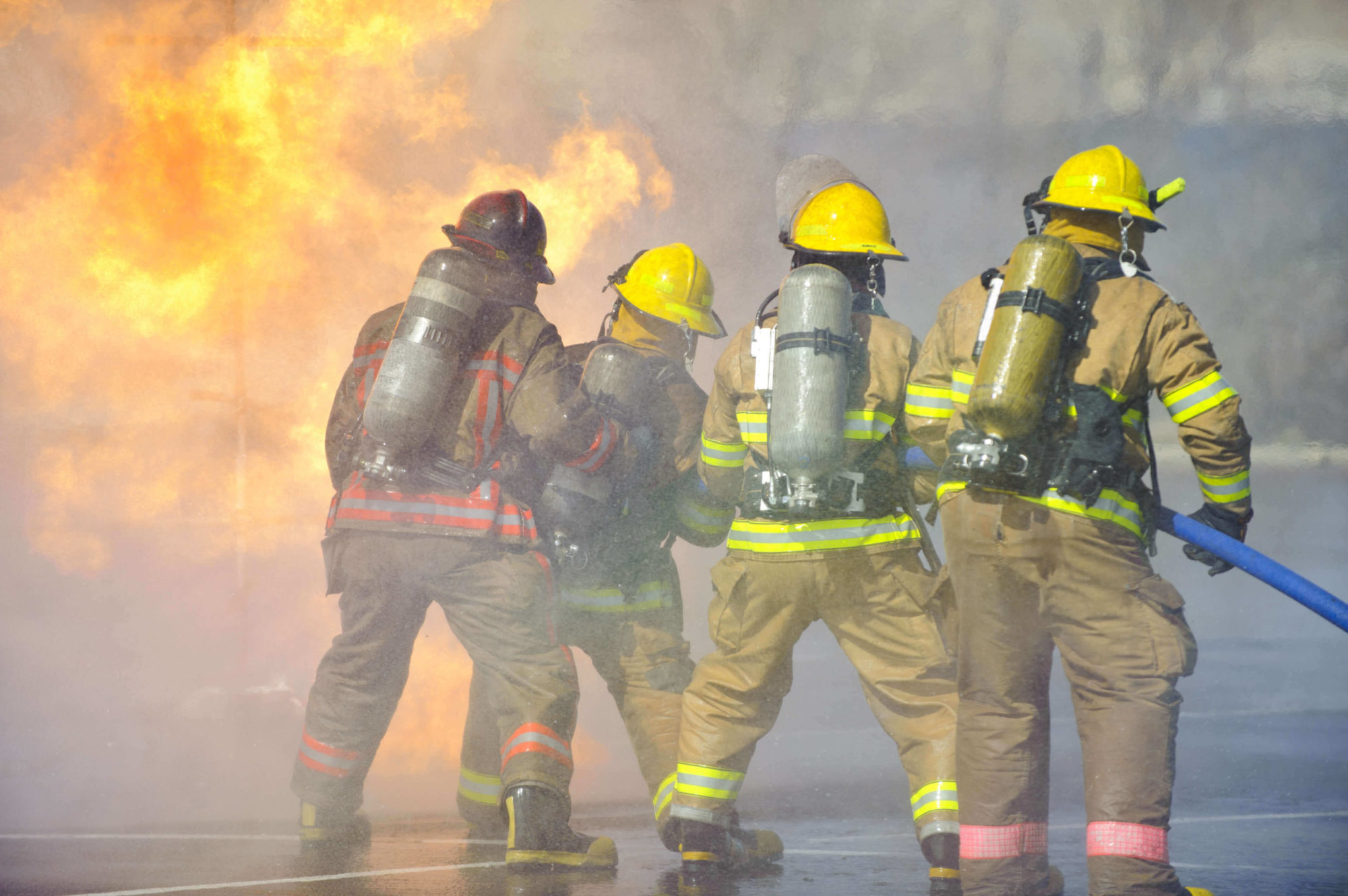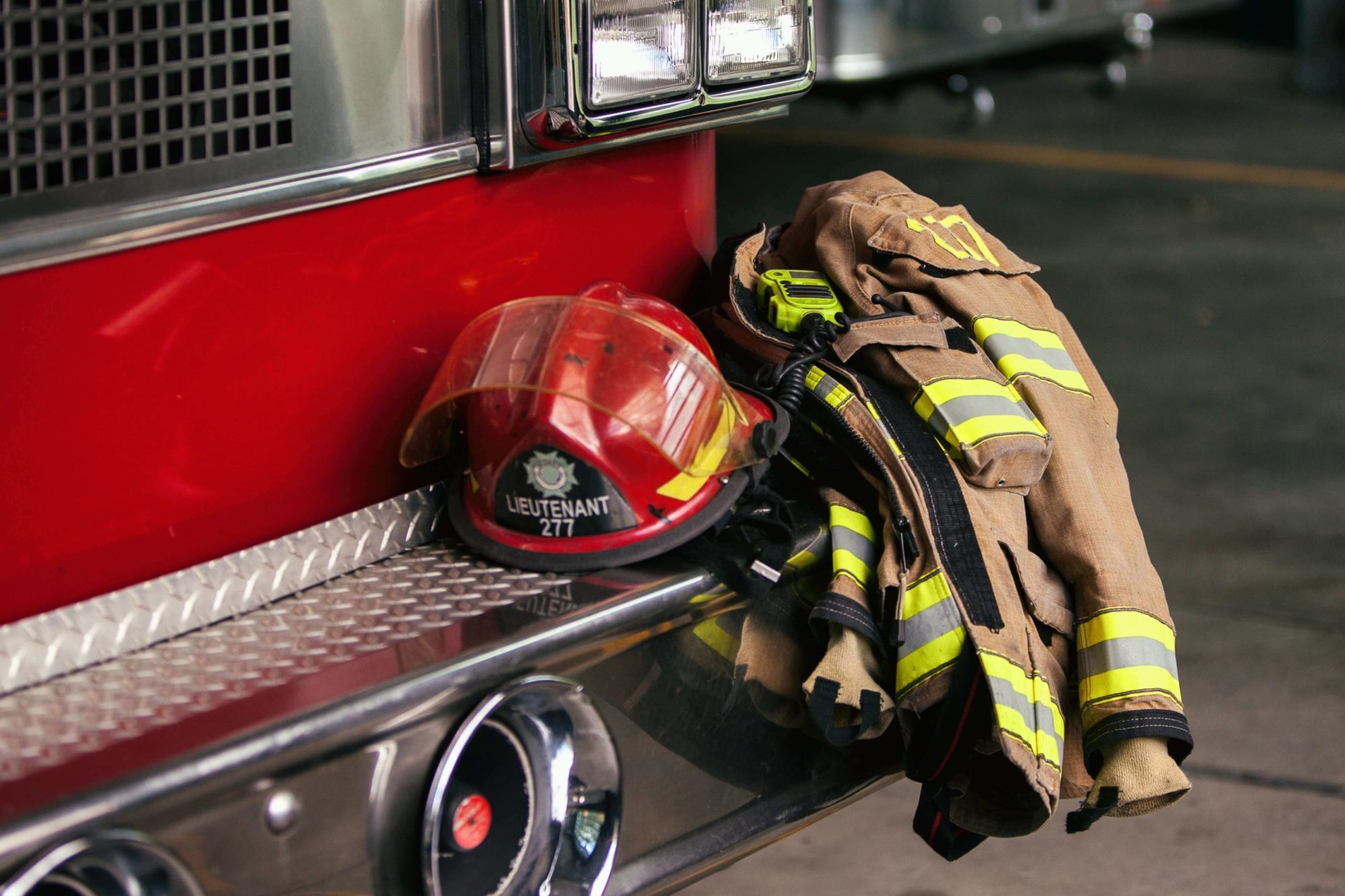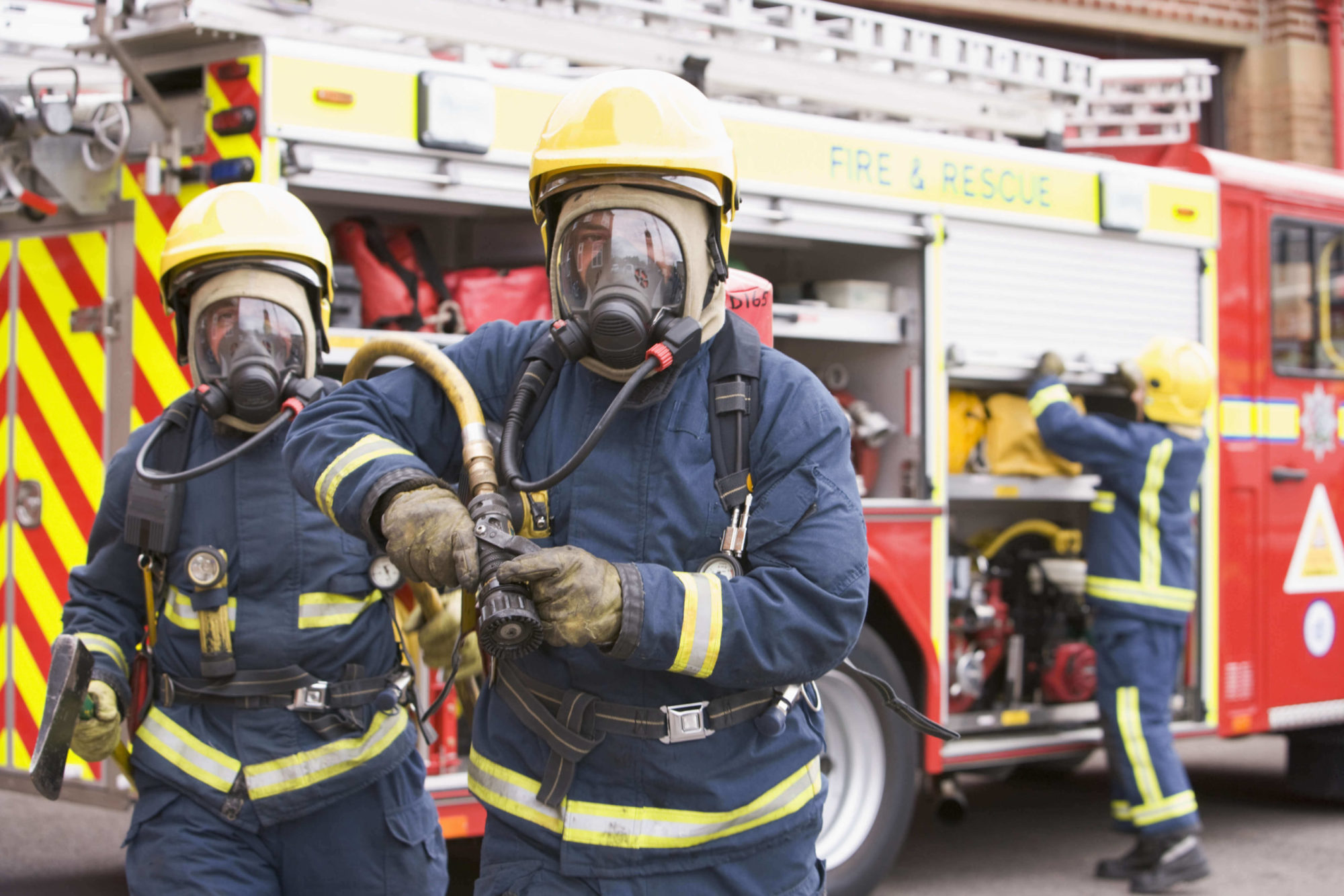When firefighters are called to extinguish a fire in an older building, the flames may not be their only hazard. Many older buildings contain asbestos, a durable mineral that’s now known to cause cancers like mesothelioma. Firefighters are twice as likely to develop mesothelioma than the general population because of their high rates of asbestos exposure.
Why Are Firefighters at Risk of Mesothelioma?
Both military and civilian firefighters are at risk of developing mesothelioma if they come in contact with asbestos, the only known cause of this cancer.

Asbestos is a durable mineral that’s resistant to heat, water, and sound — which made it a choice building material throughout most of the 20th century. In fact, from the 1930s to the late 1970s, asbestos was used to construct thousands of homes and other buildings.
When these buildings catch on fire, deteriorate, or are otherwise damaged, asbestos fibers can become airborne. As firefighters work to put out the blazes, they may unknowingly inhale the fibers, increasing their risk of mesothelioma.
Thankfully, we can help firefighters receive medical care and financial aid following a mesothelioma diagnosis. Learn about the resources we provide with a Free Veterans Packet.
How Asbestos Exposure Causes Mesothelioma
- Microscopic asbestos fibers enter the body and get trapped in the linings of major organs
- The fibers cause healthy tissues to become inflamed and scarred
- After several decades of irritation, cancer tumors form
It takes 10-50 years before asbestos exposure may cause mesothelioma or another asbestos-related disease. Due to this, firefighters exposed to asbestos decades ago may only now be at risk of mesothelioma.
Firefighter Asbestos Exposure Explained
Firefighters are usually exposed to asbestos from burning buildings. However, they can also be exposed from their protective gear, in their fire stations, or if asbestos fibers linger in the air after a fire is put out. See how firefighters were put in danger below.
Burning Buildings
Firefighters face the highest risk of exposure when trying to put out fires in older buildings made with asbestos-containing products. Modern-day firefighters may not know whether a building contains asbestos, so they must use respiratory protection to avoid exposure.
Building parts that contained asbestos include:
- Boiler systems
- Electrical wiring
- Insulation
- Pipes
- Shingles
- Tiles
Firefighters still risk asbestos exposure today when working around older buildings. In May of 2021, up to 115 firefighters were possibly exposed to asbestos while putting out a warehouse fire in Austin, Texas.
The Austin Fire Department required all the firefighters to get X-rays given the long-term cancer risks linked to asbestos exposure.
If you're a firefighter and believe you have gotten sick from asbestos exposure, contact us to discuss your next steps.
Protective Equipment
Personal protective equipment (PPE) such as fire-resistant suits and gloves once contained asbestos to protect wearers from the heat of fires before the dangers of asbestos were well-known. Modern-day PPE for firefighters no longer uses asbestos.

Firehouses
Firehouses built through the late 1970s often contained asbestos-based products like shingles and roofing. When these products broke down over time, they put firefighters at risk of exposure.
Older asbestos-containing firehouses can put firefighters in danger even today. For example, in 2022, a fire station in Mobile, Alabama had to close for five months due to asbestos and mold contamination.
Fire Cleanup Sites
Firefighters can also be exposed to asbestos after a fire has been extinguished.
As a fire burns, flames and air currents can send asbestos fibers into the air. If a firefighter removes their respiratory equipment after the fire has been put out, they may inhale or ingest asbestos without notice.
Secondhand Asbestos Exposure
The family members and loved ones of firefighters are at risk of exposure too. Airborne asbestos fibers can stick to a firefighter’s PPE, hair, and skin. Firefighters may bring these fibers back home and expose their families to asbestos without realizing it. This is known as secondhand asbestos exposure.
Firefighting Foam and Cancer Risks
Asbestos was not the only dangerous material firefighters may have been exposed to as they worked to put out blazes. Firefighting foam may have contained cancer-causing chemicals.
Starting in the 1960s, firefighters heavily relied on aqueous film-forming foam (AFFF) to smother fires. Yet AFFF contains PFAS chemicals, which are highly toxic and may linger in the body for decades.
Exposure to PFAS chemicals may lead to:
- Bladder cancer
- Breast cancer
- Colon cancer
- Kidney cancer
- Leukemia
- Liver cancer
- Lymphoma
- Pancreatic cancer
- Prostate cancer
- Rectal cancer
- Testicular cancer
- Thyroid cancer
Firefighters who served their country have a higher risk of exposure as the military relied on PFAS-based firefighting foam for six decades.
Military Firefighters and Mesothelioma Risk
Every branch of the military relied on asbestos to make buildings, vehicles, planes, and ships until the early 1980s. As a result, military firefighters run just as high a risk of mesothelioma as civilian firefighters, if not higher.
High-risk military firefighting jobs included:
- Aviation fire control technician
- Fire control technician
- Fire controlman
- Fireman
Military assets that caught fire put firefighters in danger of exposure as they worked to put out the blazes. The risk was especially high in the Navy. The government mandated the use of asbestos on every Navy ship for decades.

In 2015, the U.S. Department of Veterans Affairs (VA) noted that veterans who worked in firefighting roles had a ‘highly probable’ risk of asbestos exposure.
Firefighters and 9/11 Asbestos Exposure
The terrorist attacks on the World Trade Center in 2001 not only claimed the lives of nearly 3,000 innocent Americans — they also put first responders like firefighters at risk of asbestos-related diseases.
It's believed that 90,000 firefighters and other rescuers were exposed to asbestos in the aftermath of 9/11, according to the Environmental Working Group.
The steel framing of the Twin Towers was sprayed with asbestos fireproofing materials during construction in the early 1970s. When the attack occurred, asbestos and other toxic particles clouded the air around Ground Zero for days, exposing first responders and those nearby.
Firefighters and Mesothelioma: Reducing Risks
While there is no way to completely prevent mesothelioma, firefighters can reduce their risks of asbestos exposure by staying safe on the job and seeing a doctor if possible symptoms appear.
Wear Protective Equipment

Firefighters are usually required to wear self-contained breathing apparatuses (SCBAs) to avoid inhaling smoke and toxic particles like asbestos. SCBAs provide firefighters with clean air to breathe on the job.
For extra precaution, firefighters can wear SCBA devices during the cooling-off period (when they are still at the site but the fire is out). This can help them avoid inhaling unseen asbestos particles that might still be present in the air.
Decontaminate
The U.S. Fire Administration recommends that firefighters clean their PPE and shower after missions to reduce the risks of asbestos and other cancer-causing materials. This process is known as decontamination.
Decontamination also reduces the risk of secondhand exposure for a firefighter’s family members, since it lowers the chances that asbestos fibers will be brought home.
Seek Medical Care for Mesothelioma Symptoms
Firefighters who are experiencing possible symptoms of mesothelioma should seek care as soon as possible. Getting diagnosed early on gives patients access to more treatment options, some of which may help them live longer.
Symptoms of mesothelioma may include:
- Chest pain
- Chronic cough
- Nausea or vomiting
- Rib pain
- Shortness of breath
- Shoulder pain
- Upper back pain
It’s not uncommon for a firefighter to mistake mesothelioma for another illness since its symptoms are often vague at first. Many firefighters never expect that they have terminal cancer after suffering from relatively mild symptoms.
For example, firefighters often develop shortness of breath or a chronic cough after years of inhaling smoke from fires. Firefighters may also develop mesothelioma-related pain in the chest wall and assume it is from a muscle strain or another injury they got on the job.
Next Steps for Firefighters With Mesothelioma
Firefighters who develop mesothelioma or other asbestos-related diseases deserve the best health care possible. They may also qualify for legal compensation to cover medical expenses, lost wages, and other bills.
The Mesothelioma Veterans Center can help firefighters pursue medical treatments and financial compensation after a diagnosis. Veteran firefighters may also qualify for VA benefits.
Get a Free Veterans Packet to learn more.
FAQs About Mesothelioma and Firefighters
Is mesothelioma common in firefighters?
Yes. According to the Centers for Disease Control and Prevention (CDC), the risk of mesothelioma in firefighters is double that of the general population due to asbestos exposure.
Are firefighters at risk of asbestos lung cancer?
Yes. Firefighters are at a very high risk of lung cancer — and exposure to asbestos, smoke, and other toxins can all cause lung cancer.
The CDC notes that the more time firefighters spend at fires, the greater their risk of lung cancer.
How can firefighters get help for mesothelioma?
Our team can help firefighters with mesothelioma get justice, medical care, and financial compensation. Call (877) 450-8973 now to get started.

